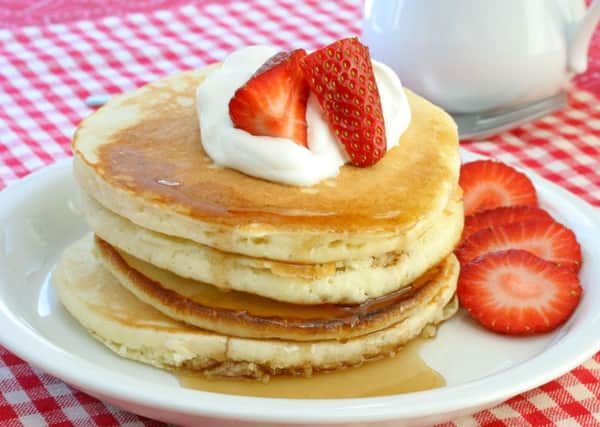Without buttermilk we wouldn't have many of our family favourites


This beautiful piece of writing comes from the poem “Churning Day” by Seamus Heaney and sums up the onerous task of making proper butter.
I’ve seen butter being made on several occasions – sometimes within rural communities and by Will Abernethy, of Abernethy Butter, at food fairs. It’s at the core of our food culture here and the resulting buttermilk is one of my favourite ingredients. Without buttermilk, we wouldn’t have our indigenous breads.
Advertisement
Advertisement
Will was making butter at the Guildhall in Londonderry last weekend as part of the Legenderry Food festival. He presented the resulting buttermilk to me in a used plastic cream container. He might as well have been giving me two litres of Chanel No 5! Nothing gladdens my heart more than this elixir, studded with golden flecks and the smell is the essence of my childhood.
On Saturday mornings my mother would make pancakes on a griddle that never made it to a cooling rack, having been instantly swiped, lathered with butter and sprinkled with sugar. I’ve included a pancake recipe this week. The batter should be thick and leave it to rest for about 15 minutes for best results.
Buttermilk is associated with baking but is a versatile ingredient in all manner of cooking. One of my recipes this week is for buttermilk fried chicken – the acid in the buttermilk is a great tenderiser and adds flavour to boot. Ranch dressing is a classic all American recipe that would work really well with the crispy chicken. Simply whisk four tablespoons of good quality mayonnaise with four tablespoons of buttermilk, a pinch of paprika and a clove of crushed garlic. Season with salt and pepper to taste. The buttermilk adds a sharp note to the creamy dressing.
The acidity in buttermilk, combined with the alkali of baking soda, is what makes it so good for quick breads like wheaten and farls. It also works well with a slower yeast dough. Another recipe uses buttermilk in a yeast based roll. The resulting bread has the zing of wheaten bread but without the crumbly texture. The rolls would be fantastic split open for a sandwich with the buttermilk chicken.
Advertisement
Advertisement
Buttermilk has become trendy with lots of restaurants offering buttermilk pannacotta and baked buttermilk tart as options on dessert menus. It adds a complexity of flavour to desserts and detracts from dishes being overly sweet. Added to sponges, the acid in buttermilk reacts with alkali raising agents to give a lighter than normal cake.
Apart from its versatility in cooking it has legendary health benefits. I know lots of people, who’ve lived to a ripe old age, that have put their longevity down to drinking buttermilk. Buttermilk that is commercially available is slightly thicker than the traditional one, but still has the distinct flavour and the bonus of having no fat.
Either way buttermilk is in our DNA and is really worth celebrating!